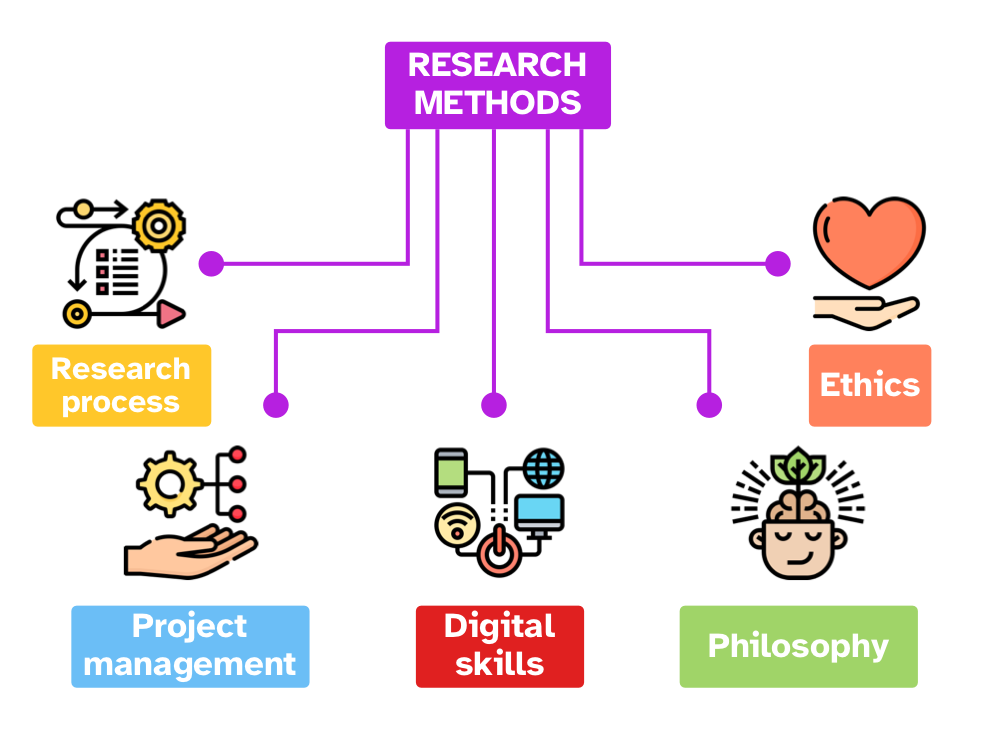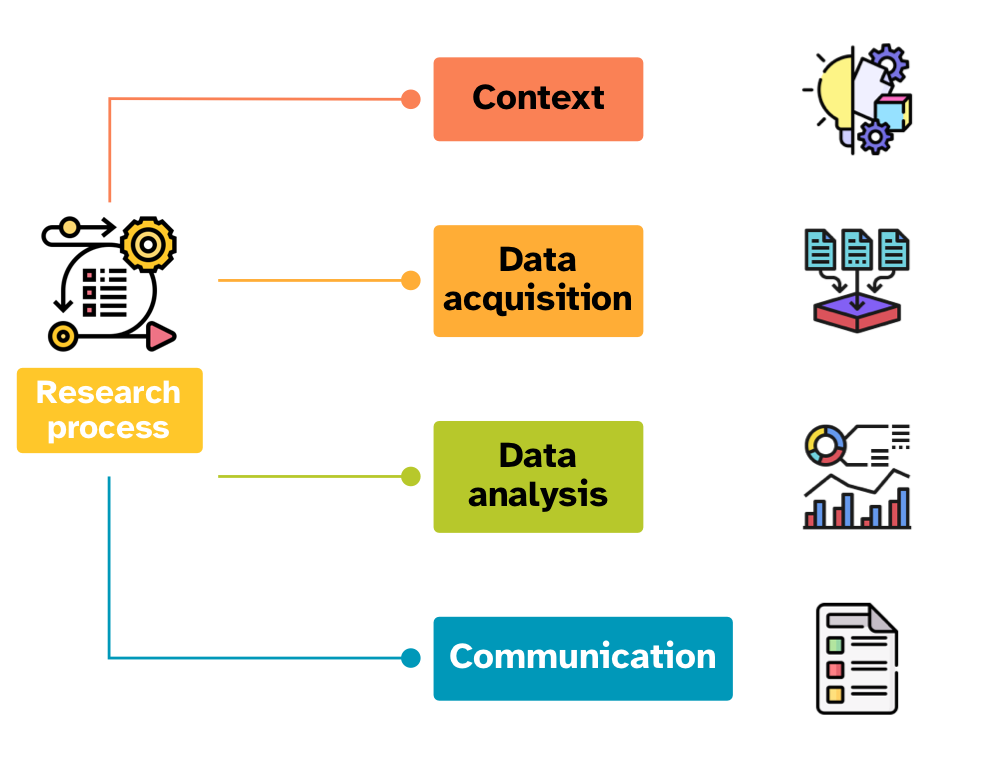Research Methods and Hodotics
1 Research methods
Research Methods are about the theory, methods and practice of conducting research. I like to call the discipline that deals with research methods Hodotics.
One way of categorising different aspects of research methods is represented in the following figure.

You can think of research methods as the combination of:
The research process: the process of conducting a research project, from determining the research context to communicating results.
Project management: the process of managing a research project, from project planning to writing-up.
Digital skills: all research involves using computers (at least at some point if not throughout) so that computer literacy and digital skills are nowadays a fundamental aspect of research.
Philosophy: all research is not performed in a vacuum and a lot of philosophical questions shape the entire research process.
Ethics: all research is not performed in a social vacuum and ethical considerations are a fundamental aspect of research.
2 The research process
Let’s zoom in on the research process.

Context: the research context includes several aspects of the research process, including the background (i.e. the previous literature and current knowledge) and the rational of the study (from the general topic to specific research questions/hypotheses).
Data acquisition: this is the process of gathering data to be used in the study. Data acquisition covers many different types of processes, from experimental set-ups to corpus queries.
Data analysis is the process of analysing the acquired data using qualitative, quantitative or a mixed methods. This part of the research process also include interpreting the output of such analysis.
Communication: finally, the last step in a research process cycle is to communicate what was done and what was learned, both to the research community and to the wider public.